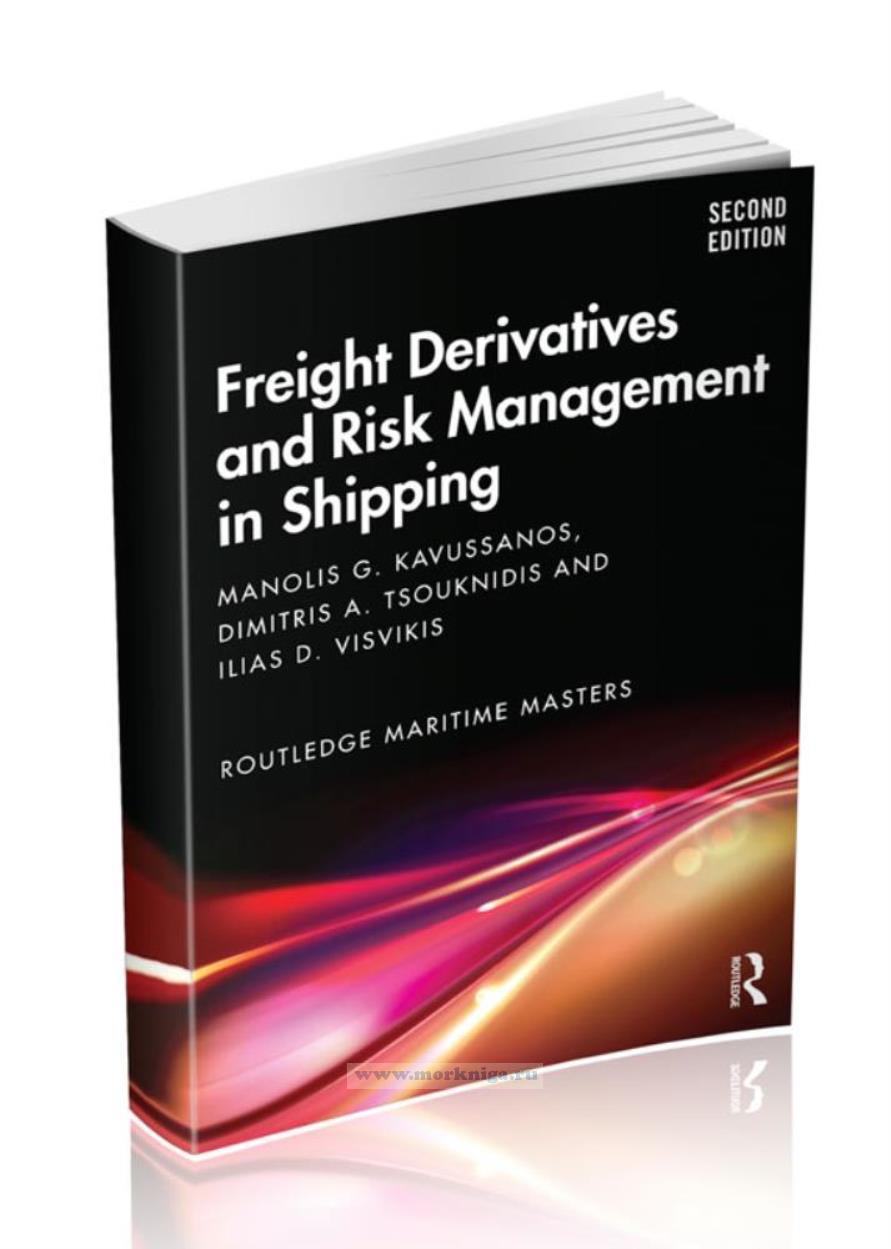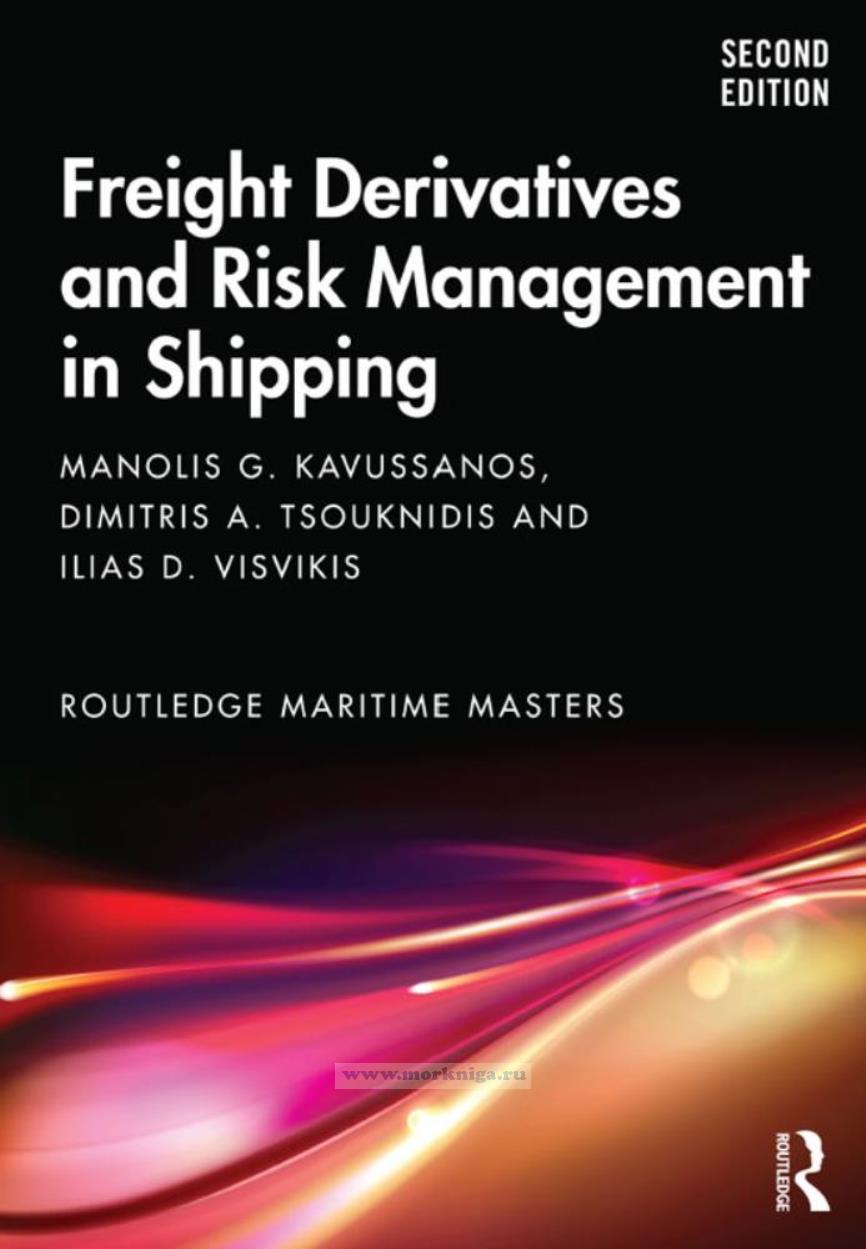Сб с 10 до 16
Freight Derivatives and Risk Management in Shipping/Деривативы на фрахт и управление рисками в судоходстве
Издание на английском языке
Since the publication of the first edition of this book in June 2006, several structural changes have taken place in the shipping derivatives market including, among others: the introduction of new derivative instruments; the signifcant changes in the trading mechanics of existing derivative instruments; the entrance in the market of new types of players (non-shipping related); the adoption of more sophisticated trading techniques and strategies; the increase in the number of exchanges trading shipping derivatives and of clearing houses, which by clearing counterparties’ credit risk, enable trades that would have not taken place otherwise; the pronounced impact of the global financial and shipping crisis of 2008–2009; and the collapse of oil’s price and the Covid-19 pandemic of 2020.
Contents
Preface to the second edition
Preface to the first edition
List of abbreviations
1 Introduction to the shipping markets and their empirical regularities
1.1 Introduction
1.2 Market segmentation of the shipping industry
1.3 Market conditions in shipping freight markets
1.4 Equilibrium freight rates in tramp freight markets
1.5 Vessel prices and vessel price risks
1.6 Summary
2 Business risks analysis in shipping and traditional risk management strategies
2.1 Introduction
2.2 The sources of risk in the shipping industry
2.3 Business decisions faced by the international investor
2.4 The cash-fow position of the shipowner
2.5 Volatilities of spot and time-charter rates in shipping
2.6 Volatility spillovers across shipping segments
2.7 Correlations amongst shipping sub-sectors and portfolio diversifcation
2.8 Summary of traditional risk management strategies
2.9 Risk management and the use of derivatives in the shipping industry
2.10 Summary
3 Introduction to fnancial derivatives
3.1 Introduction
3.2 The economic functions and benefts of fnancial derivatives
3.3 The risks associated with fnancial derivatives
3.4 Types of participants in derivatives markets
3.5 Forward and futures contracts
3.6 Swap contracts
3.7 Option contracts
3.8 Accounting treatment of derivative transactions
3.9 Summary
Appendix: Cumulative standard normal distribution table
4 Freight market information and freight rate indices
4.1 Introduction
4.2 Dry-bulk market information and freight rate indices
4.3 Tanker market information and freight rate indices
4.4 Containership freight rate indices
4.5 Summary
5 Freight rate derivatives
5.1 Introduction
5.2 Freight futures markets: early eforts and currently non-active exchanges in freight derivatives – a historical perspective
5.3 Active exchanges trading freight futures and associated clearing-houses
5.4 Over-The-Counter (OTC) freight derivatives
5.5 Market information on FFAs and freight options contracts
5.6 Historical evolution of shipping derivatives
5.7 Summary
Appendix I: Clarksons dry-bulk FFA daily report (29 May 2019)
Appendix II: Clarksons dry-bulk freight options daily report (23 June 2017)
Appendix III: Forward Freight Agreement Brokers Association (FFABA) Forward Freight Agreement
Appendix IV: Forward Freight Agreement Brokers Association (FFABA) Freight Options Contract
6 Applications of FFAs, pricing and risk management of FFA positions
6.1 Introduction
6.2 Practical applications of freight futures and FFAs
6.3 Freight derivatives strategies for banks
6.4 Freight derivatives versus other risk management strategies
6.5 The role of brokers in freight derivatives
6.6 Economics and empirical evidence on FFAs and freight futures
6.7 Summary
7 Applications of freight options
7.1 Introduction
7.2 The characteristics of freight options
7.3 Option strategies for freight hedging purposes
7.4 Freight option strategies for finance purposes
7.5 Freight option strategies for investment purposes
7.6 Summary of freight option strategies
7.7 Economics and empirical evidence on freight options
7.8 Summary
8 Market risk measurement and management in shipping markets. Manolis G. Kavussanos and Dimitris N. Dimitrakopoulos
8.1 Introduction
8.2 What is Value-at-Risk (VaR)?
8.3 Various types of Value-at-Risk models
8.4 Extreme value theory
8.5 Expected shortfall
8.6 The evaluation of VaR models: backtesting
8.7 Practical examples on estimating market risk in shipping
8.8 Summary
9 Bunker price derivatives
9.1 Introduction
9.2 The bunker market
9.3 Key economic variables afecting the bunker market
9.4 Forward bunker agreements
9.5 The bunker fuel oil futures market
9.6 Bunker swaps
9.7 Bunker options
9.8 Summary
10 Vessel value derivatives
10.1 Introduction
10.2 The Forward Ship Value Agreements (FoSVAs) and Sale & Purchase Forward Agreements (SPFAs)
10.3 Practical applications of SPFAs
10.4 Pricing SPFA contracts
10.5 Baltic Ship Recycling Assessments (BSRAs)
10.6 Summary
11 Foreign exchange derivatives
11.1 Introduction
11.2 Money market hedging
11.3 Currency forwards and futures
11.4 Currency swaps
11.5 Currency options
11.6 Comparison of derivative transactions in the currency market
11.7 Summary
12 Interest rate derivatives
12.1 Introduction
12.2 The underlying assets
12.3 Forward Rate Agreements (FRAs)
12.4 Interest rate futures
12.5 Interest rate swaps
12.6 Interest rate options
12.7 Summary
13 Credit risk and credit derivatives. Manolis G. Kavussanos AND Dimitris A. Tsouknidis
13.1 Introduction
13.2 Sources of credit risk in the shipping business
13.3 Types and measures of credit risk
13.4 Credit scoring models
13.5 Structural models of credit risk
13.6 Credit risk in derivative transactions
13.7 Credit risk in bunker fuel oil transactions
13.8 Credit risk management
13.9 Summary
14 Statistical tools for risk management in shipping
14.1 Introduction
14.2 Data sources and methods
14.3 Descriptive statistics and the moments of random variables
14.4 Time-varying volatility models
14.5 Forecasting volatility
14.6 Summary
Bibliography
Index

